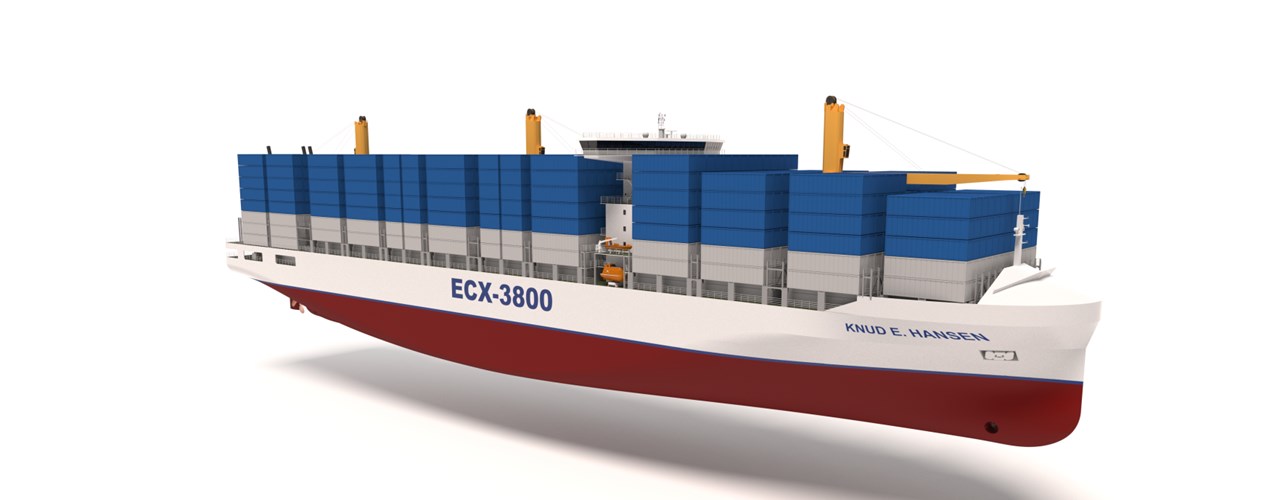New container feeder vessel designs have been unveiled by the Danish naval architect company KNUD E. HANSEN.
The vessels are designed to provide innovative solutions to specific requirements.
Solution One: Calling at Narrow River Ports
A 2000 TEU vessel specialised for calling at small, narrow, up-river ports, for example the Port of Bangkok, Thailand.
These harbours require vessels to have a shallow draught – for example at Bangkok, not more than 8.2 metres. To achieve this the vessel must have a relatively small diameter propeller
To prevent any loss of power, KNUD E. HANSEN’s have designed a special propeller arrangement employing a directly driven main propeller with a diameter of 5.8 m and a counter-rotating Azipod with a 4.7 m propeller.
The total propeller disk area of the two propellers corresponds to the area of a single propeller with a diameter of approx. 7.4 m and further, the counter-rotating propeller will recover some of the swirl energy produced by the main propeller, which increases the overall efficiency.
Solution Two: Deckhouse Positioning to Maximise Cargo Slots
In an design unusual to most feeders, the deckhouse is positioned forward of amidships to maximize the number of container slots on deck whilst meeting the IMO requirements to the line of vision from the bridge
The added number of slots can be utilized in real-life loading conditions because the vessel is wider and has a higher stability than most feeder vessels of this size.
The company say an additional benefit is that “This prepares the vessel for LNG and dual-fuel propulsion – attributes that are becoming increasingly sought after. Here, we have a square block below the deckhouse, in which we can either have HFO tanks or LNG tanks. What’s more, the vessel can be built with HFO tanks and easily retrofitted for LNG the day the infrastructure for LNG is sufficiently developed if a dual-fuel engine is installed in the first place.”
Solution Three: Innovative Hull Shape Optimised for Both Partial and Full Container Loads
This is to address a number of issues that arise from the way load varies the behaviour of a vessel.
A large container vessel, when carrying few containers, offers shallow draught, but has so much stability that accelerations are too high, causing problems for the lashing gear and the crew.
“In this situation, you don’t want anything more than sufficient stability and so a narrow hull is preferable,” says Mr. Kanstrup, Senior Naval Architect at KNUD E. HANSEN, “The problem being that, when you come to carrying a full load you require a wider water line for additional stability.
The solution is a hull with inclined sides but with triangular sections mirrored each side to create a trimaran or in other wordsa “stabilized mono-hull” with a narrow main hull with vertical sides and outrigger hulls with a triangular cross section, but vertical sides towards the quay.
This way you have the narrowness associated with low accelerations at partial load, and with the triangular section of the outrigger hulls, increased stability for full loads at deeper draught.
When the vessel is not heeling, the sides barely touch the surface of the water, meaning little resistance. This ensures a vessel which can have a relatively high service speed while maintaining a reasonable fuel consumption per container.



































